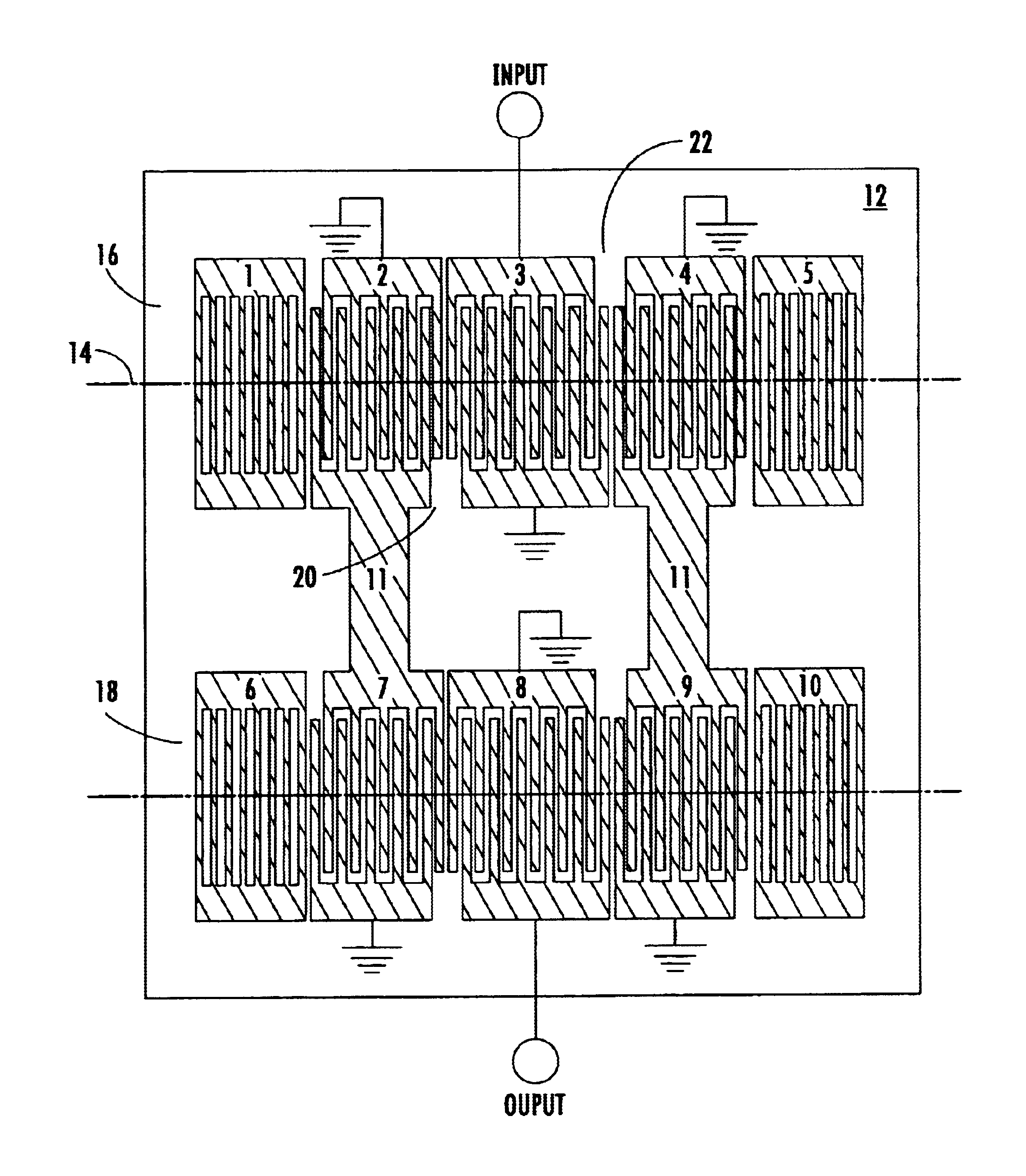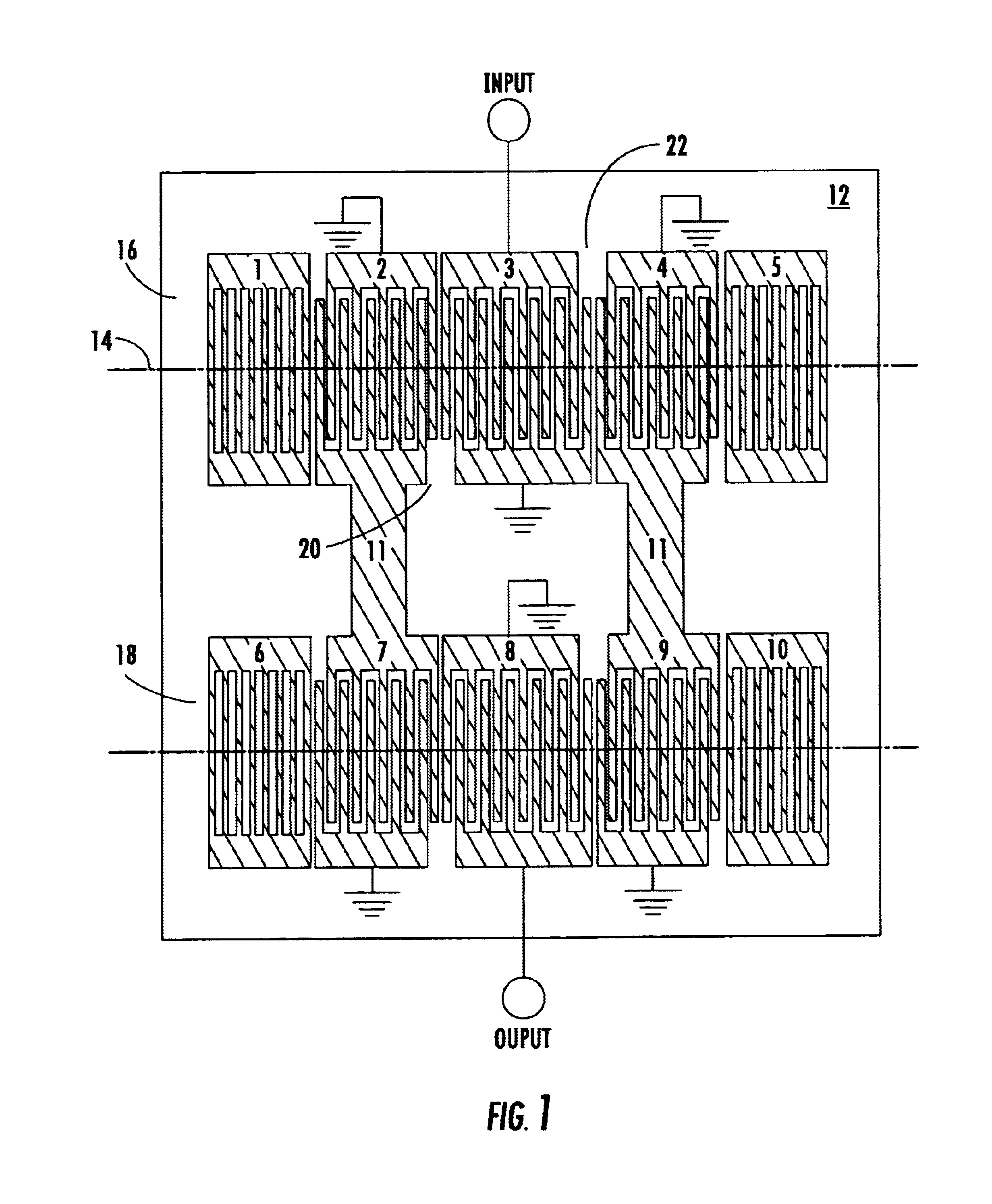Longitudinally coupled leaky surface acoustic wave resonator filter
a leaky surface acoustic wave and longitudinally coupled technology, applied in piezoelectric/electrostrictive/magnetostrictive devices, piezoelectric/electrostriction/magnetostriction machines, electrical equipment, etc., can solve the problems of bulk scattering, insertion loss, etc., and achieve the effect of limiting the overall power handling capability of the device, high acoustic energy density, and power handling capability
- Summary
- Abstract
- Description
- Claims
- Application Information
AI Technical Summary
Benefits of technology
Problems solved by technology
Method used
Image
Examples
Embodiment Construction
The present invention will now be described more fully with reference to the accompanying drawings in which preferred embodiments of the invention are shown and described. It is to be understood that the invention may be embodied in many different forms and should not be construed as limited to the illustrated embodiments set forth herein. Rather, the applicant provides these embodiments so that this disclosure will be thorough and complete, and will convey the scope of the invention to those skilled in the art.
FIG. 1 is a schematic diagram of one preferred embodiment of the present invention. By way of example, a device of the present invention includes two separate LSAW resonator tracks 16, 18, connected in series. One first track 16. Track 1, includes an input IDT 3, two output IDTs 2 and 4, and two reflective gratings 1 and 5. The second track 18, Track 2, includes two input IDTs 7 and 9, an output IDT 8, and two reflective gratings 6 and 10. The output IDTs 2, 4 of the first tr...
PUM
 Login to View More
Login to View More Abstract
Description
Claims
Application Information
 Login to View More
Login to View More - R&D
- Intellectual Property
- Life Sciences
- Materials
- Tech Scout
- Unparalleled Data Quality
- Higher Quality Content
- 60% Fewer Hallucinations
Browse by: Latest US Patents, China's latest patents, Technical Efficacy Thesaurus, Application Domain, Technology Topic, Popular Technical Reports.
© 2025 PatSnap. All rights reserved.Legal|Privacy policy|Modern Slavery Act Transparency Statement|Sitemap|About US| Contact US: help@patsnap.com



